Abstract
Service monitoring data on the outcomes of health visitors' screening for hearing loss at 8 months in West Berkshire indicate low sensitivity and low positive predictive value, despite efforts to improve the conduct of the screen. Nevertheless, data on a recent series of severely hearing impaired children indicate significantly earlier diagnosis than previously, due in part in the introduction of other service changes including neonatal 'at risk' screening and surveillance using parental observation. For a trial period the traditional screening method for the detection of hearing loss in babies will be discontinued and effort concentrated on these alternative procedures.
Full text
PDF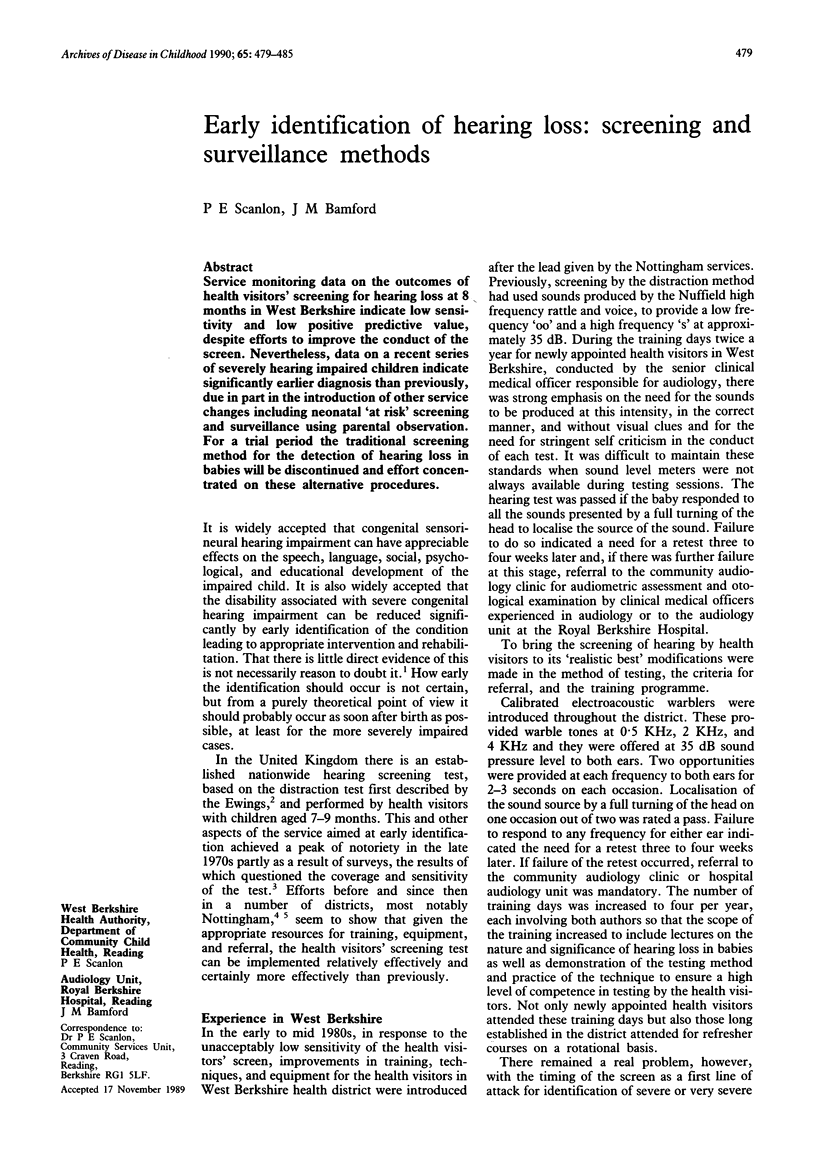
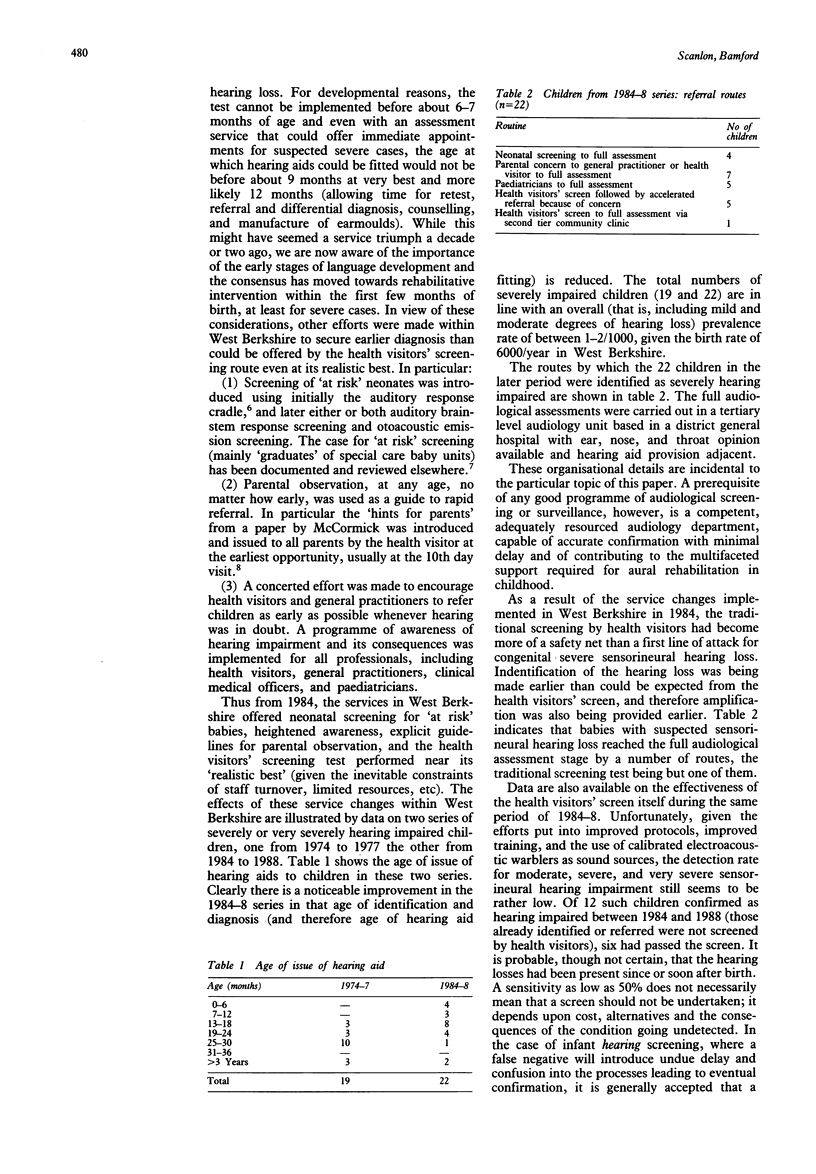
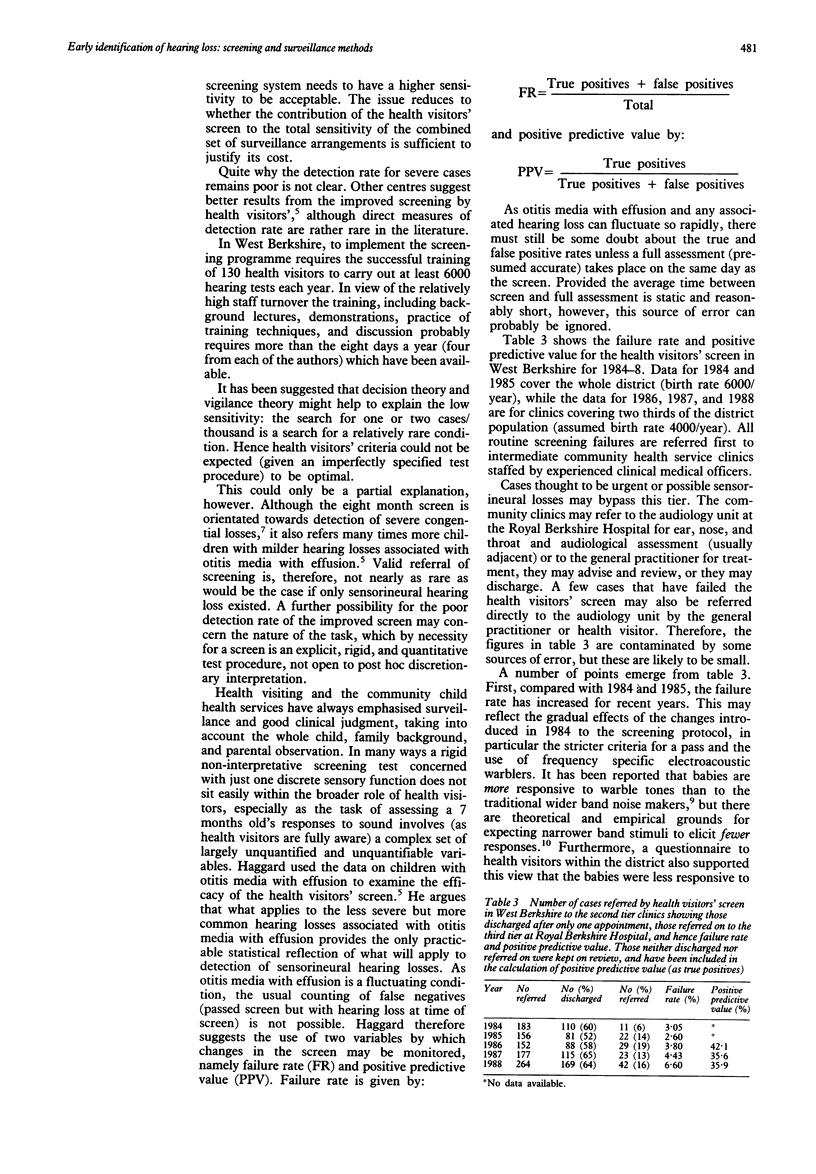
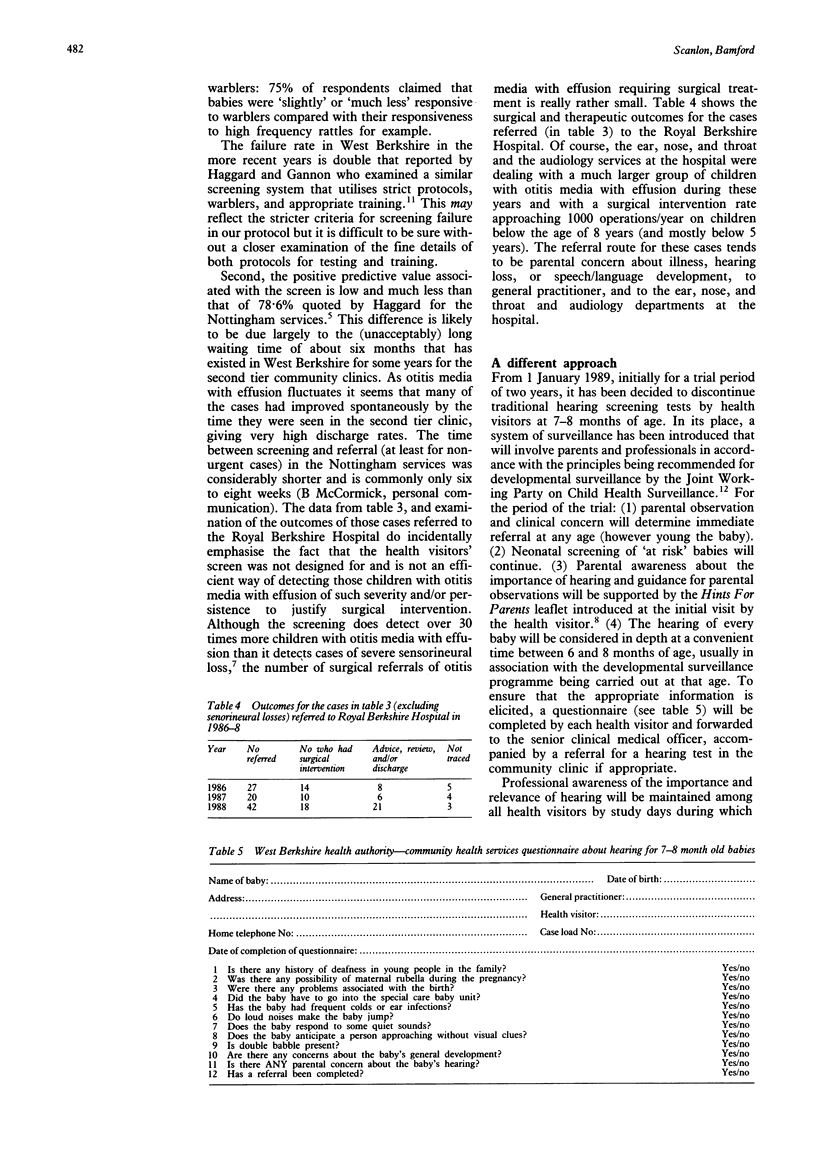
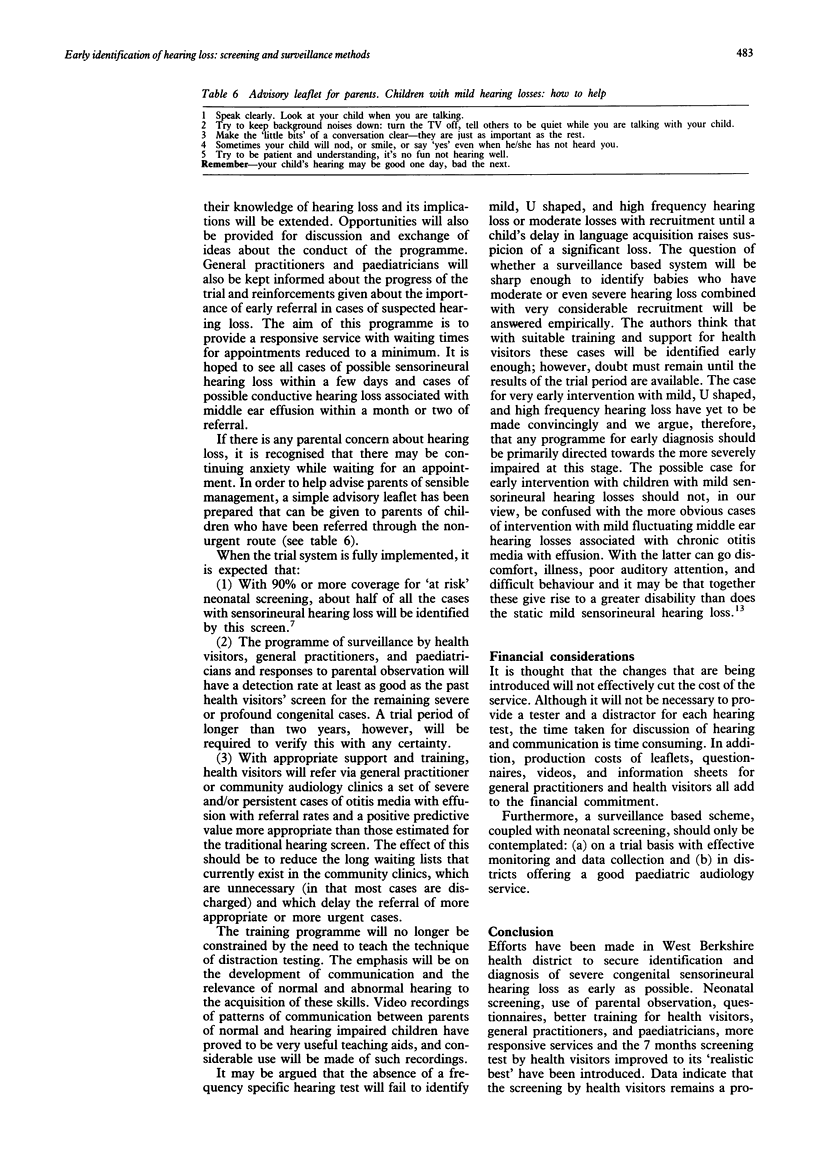
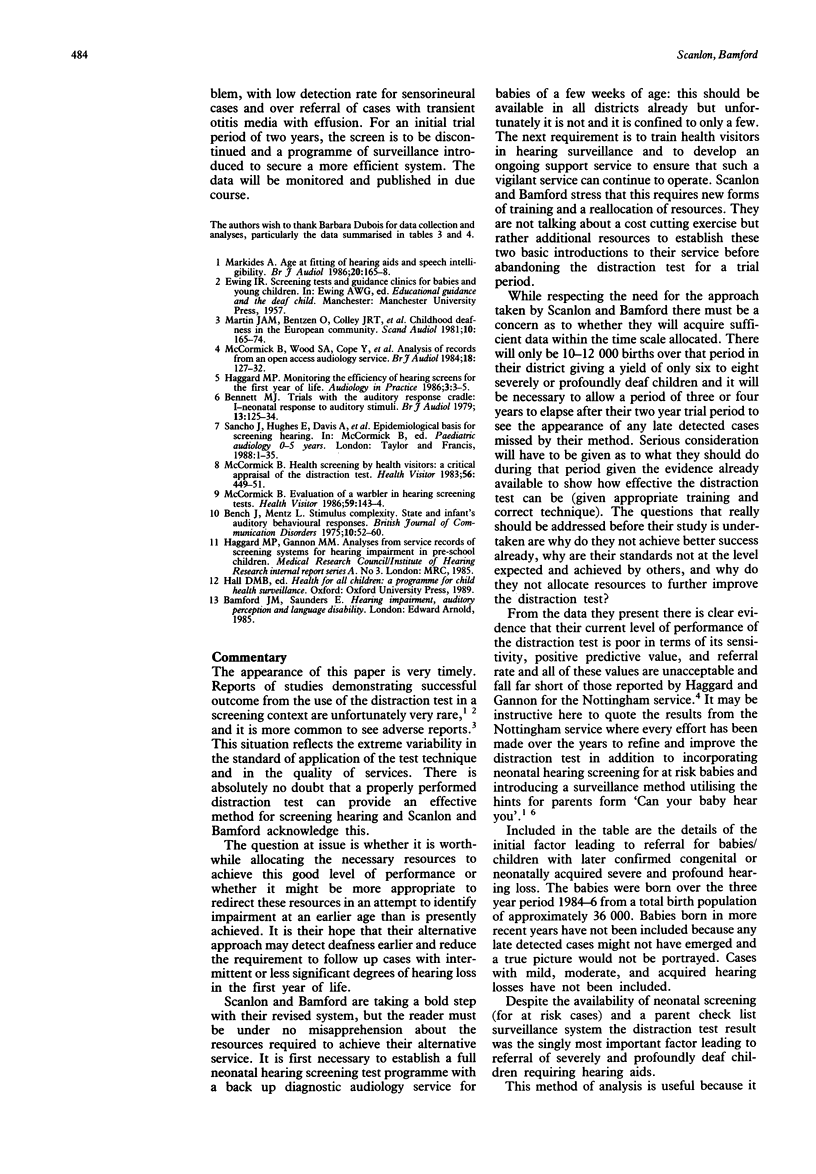
Selected References
These references are in PubMed. This may not be the complete list of references from this article.
- Bench J., Mentz L. Stimulus complexity, state and infants' auditory behavioural responses. Br J Disord Commun. 1975 Apr;10(1):52–60. doi: 10.3109/13682827509011274. [DOI] [PubMed] [Google Scholar]
- Bennett M. J. Trials with the auditory response cradle. 1--Neonatal responses to auditory stimuli. Br J Audiol. 1979 Nov;13(4):125–134. doi: 10.3109/03005367909078887. [DOI] [PubMed] [Google Scholar]
- Markides A. Age at fitting of hearing aids and speech intelligibility. Br J Audiol. 1986 May;20(2):165–167. doi: 10.3109/03005368609079011. [DOI] [PubMed] [Google Scholar]
- Martin J. A., Bentzen O., Colley J. R., Hennebert D., Holm C., Iurato S., de Jonge G. A., McCullen O., Meyer M. L., Moore W. J. Childhood deafness in the European community. Scand Audiol. 1981;10(3):165–174. doi: 10.3109/01050398109076177. [DOI] [PubMed] [Google Scholar]
- McCormick B. Hearing screening by health visitors: a critical appraisal of the distraction test. Health Visit. 1983 Dec;56(12):449–451. [PubMed] [Google Scholar]
- McCormick B., Wood S. A., Cope Y., Spavins F. M. Analysis of records from an open-access audiology service. Br J Audiol. 1984 Aug;18(3):127–132. doi: 10.3109/03005368409078940. [DOI] [PubMed] [Google Scholar]


